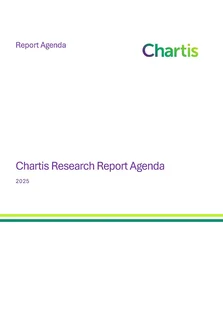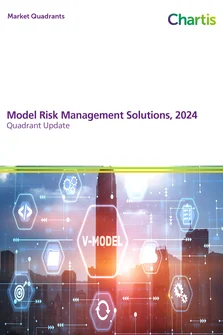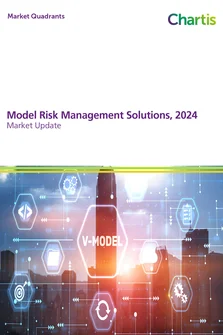<p>Stress testing and scenario modeling is the most important function of any financial institution (FI) that wants to survive market shocks and increased regulatory scrutiny. Traditional stress testing failed to spot the last financial crash in 2008 because it was too silo-based, didn’t have management support and wasn’t truly enterprise-wide. FIs didn’t integrate credit, market, liquidity and operational risk, or secondary impacts like reputational risk, into consolidated governance and functional processes. Technology systems didn’t deliver clean data that aligned with finance correlated across multiple risk factors and dimensions, including asset classes, legal entities or business lines.</p>
<p>This is why integrated enterprise-wide stress testing is now a necessity. But Chartis’s latest survey of 68 global FIs, and in-depth interviews with 22 senior risk practitioners, show the desired integration still isn’t happening. Siloed processes and systems prevail, and there’s no real faith in the numbers except to satisfy the regulator.</p>
<ul>
<li>95% of respondents identified data quality as a significant challenge. Less than half (45%) have integrated the assumptions and data used in stress testing in credit portfolio management. Only 33% have achieved it in risk strategy and 29% in business planning. Integration tends to be visible within risk silos, not at an enterprise-wide level.</li>
</ul>
<ul>
<li>Only 12% of boardrooms have a “high” involvement in stress testing, with senior executive committee involvement at only 18%. A majority concede a “medium” degree of involvement but this isn’t good enough. Chief risk officers (CROs), an increasingly scarce and expensive resource, need more boardroom support to deliver enterprise stress testing.</li>
</ul>
<ul>
<li>13% said front office stress testing is well integrated, highlighting a disconnect with middle and back office functions. Different risk types, IT, business lines and regions remain siloed, especially at smaller FIs. Business as usual (BAU) internal risk assessments are siloed from enterprise-wide efforts that aren’t joining up the dots as they’re compliance-focused.</li>
</ul>
<ul>
<li>Some financial services (FS) sectors are better than others, with buy-side pension providers and commercial banks, with their longer-term viewpoints and more developed forecasting capabilities, generally ahead of short-term sell-side capital market participants, although they lack real-time reporting systems for collateral and intra-day pricing.</li>
</ul>
<p>Technology support is lacking too, with a majority of FIs still relying on Excel and an evident lack of integration between workflows, risk systems and dashboards. Too often external consultants aggregate data into compliance only spreadsheets that don’t offer additional and longer term business benefits. Few of the surveyed FIs have embedded reverse stress testing into decision-making.</p>
<p>Chartis has identified three key implementation challenges that need to be overcome:</p>
<p><em><strong>1. Methodology:</strong></em> Alignment problems and inconsistency issues between business rules and multiple regulatory requirements still plague FIs, inhibiting integrated enterprise-wide stress testing and opportunity spotting.</p>
<p><em><strong>2. Data and IT infrastructure</strong></em>: Data availability, quality and aggregation are still lacking. Some financial utilities and collateral reporting engines are seeking to address this, but too many don’t have industry buy-in. Besides, individual firms still rely on their own internal departmental risk systems to manage their business while spotting potential threats and rewards. Excel spreadsheets aren’t the way.</p>
<p><em><strong>3. Governance:</strong></em> Poor control procedures, insufficient sustained re-usability and a lack of boardroom support are not delivering the systematic decision-support structures that are needed.</p>
<p>FIs, including insurers and central counterparty (CCP) clearinghouses, must comply with regional implementations of the global rules, such as the US Federal Reserve’s Comprehensive Capital Analysis & Review (CCAR) stipulations under the Dodd-Frank Act Stress Testing (DFAST) rules. They also face the equivalent Bank of England (BoE), Asian and European Central Bank (ECB) stress tests – but compliance shouldn’t be to the detriment of internal business focused risk procedures. These remain siloed and are not delivering the valuable risk / opportunity data they should.</p>
<p><strong>Best practice & technology</strong></p>
<p>This report from Chartis tracks developments in the marketplace, suggests best practice and provides an overview of the available risk technology support systems. The report also looks at the demand side outlining the business challenges and FI landscape, while the supply side element will look at the technology for enterprise stress testing procedures and the vendor landscape.</p>
<p>The technology solutions should be assessed in market segments covering retail / commercial banks, universal banks and capital markets’ sell and buy-side participants, with cross-functionality to be prized, and cross risk category capabilities too. Ideally any software deployed should be able to handle credit, market, liquidity and operational risk, alongside asset liability management (ALM), and insurance risk. The best vendor systems, which may require some bespoke integration assistance, should offer:</p>
<ul>
<li>Multi-business, asset & multi-jurisdictional functionality, allied to automation capabilities.</li>
<li>BAU internal stress testing and external regulatory reporting and connectivity.</li>
<li>Integration capabilities with third party (central bank) and end user (FI) models and analytics.</li>
<li>Merging capabilities to fuse finance and risk data, including macro-economic inputs.</li>
</ul>
<p>Enterprise stress testing should impact business decisions at a high level and on a day-to-day basis, instead of being an isolated compliance activity. Leadership from the top is needed to make this happen, in order to remove silos and ensure a strategic approach that merges disparate processes and structures into an end-to-end stress testing process that is unified under one governance umbrella. It’s still some way off, as FIs instead target short-term compliance tickboxes.</p>
<p>This report uses Chartis’s RiskTech Quadrant<sup>®</sup> to explain the structure of the market. The RiskTech Quadrant<sup>®</sup> uses a comprehensive methodology of in-depth independent research and a clear scoring system to explain which technology solutions meet an organization’s needs. The RiskTech Quadrant<sup>®</sup> does not simply describe one technology solution as the best risk management solution for enterprise stress testing; it has a sophisticated ranking methodology to explain which solutions would be best for buyers, depending on their implementation strategies.</p>
<p>This report covers the leading vendors offering risk management solutions for enterprise stress testing, including Axioma, BearingPoint, BlackRock Solutions, Bloomberg, Broadridge, Calypso, ClusterSeven, FICO, FINCAD, Fiserv, IBM, Markit, Mathworks, Misys, Moody’s Analytics, MSCI, Murex, Numerix, Oracle, Intellect Design Arena, Prometeia, Quantifi, SAP, SAS, SS&C, SunGard, and Wolters Kluwer FS.</p>
Only users who have a paid subscription or are part of a corporate subscription are able to print or copy content.
To access these options, along with all other subscription benefits, please contact info@risk.net or view our subscription options here: http://subscriptions.risk.net/subscribe
You are currently unable to print this content. Please contact info@chartis-research.com to find out more.
You are currently unable to copy this content. Please contact info@chartis-research.com to find out more.
Copyright Infopro Digital Limited. All rights reserved.
As outlined in our terms and conditions, https://www.infopro-digital.com/terms-and-conditions/subscriptions/ (point 2.4), printing is limited to a single copy.
If you would like to purchase additional rights please email info@chartis-research.com
Copyright Infopro Digital Limited. All rights reserved.
You may share this content using our article tools. As outlined in our terms and conditions, https://www.infopro-digital.com/terms-and-conditions/subscriptions/ (clause 2.4), an Authorised User may only make one copy of the materials for their own personal use. You must also comply with the restrictions in clause 2.5.
If you would like to purchase additional rights please email info@chartis-research.com


